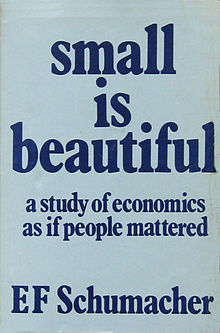Sometime last week I had asked the question, whether Indians were going back to using cash. And I had offered some evidence regarding the same. I had concluded by saying that “there is not enough data to say that Indians have totally gone back to cash, but the data that is available does suggest that they are moving towards it”.
In this piece, I will look at the same question by using a different set of data. On March 10, 2017, the Reserve Bank of India(RBI) released a document titled Macroeconomic Impact of Demonetisation- A Preliminary Assessment.
One of the things that the RBI document discusses is the usage of different digital modes of payment in the aftermath of demonetisation. As the RBI document points out: “After the announcement of demonetisation, digital activity levels were low in the initial weeks as people were busy depositing/exchanging SBNs (specified bank note). However, in December 2016, digital payment activity increased alongside progressive remonetisation.”
How does the data look? Let’s first take a look at Table 1, which has the total number of digital transactions for various modes of payment.
Table 1
| Volume (in Crore) | Nov-16 | Dec-16 | Jan-17 | Feb-17 |
|---|---|---|---|---|
| National Electronic Funds Transfer | 12.30 | 16.60 | 16.40 | 14.80 |
| Cheque Truncation System | 8.70 | 13.00 | 11.80 | 10.00 |
| Immediate Payment Service | 3.60 | 5.30 | 6.20 | 6.00 |
| Unified Payment Interface | 0.03 | 0.20 | 0.42 | 0.42 |
| Unstructured Supplementary Service Data | 0.00 | 0.01 | 0.03 | 0.02 |
| Debit and Credit Card Usage at Point of Sales | 20.60 | 31.10 | 26.60 | 21.20 |
| Prepaid Payment Instrument | 5.90 | 8.80 | 8.70 | 7.80 |
| Total | 51.13 | 75.01 | 70.15 | 60.24 |
Source: Reserve Bank of IndiaTable 1 tells us that digital payments went up in the aftermath of demonetisation and peaked in December 2016. Now take a look at Figure 1, which basically plots the total number of transactions.
Figure 1
What does Figure 1 tell us? It tells us that the total number of digital transactions in the aftermath of demonetisation did go up by around 50 per cent in December 2016 in comparison to November 2016, but has fallen since then. In February 2017, the number of transactions (i.e. the volume of transactions) had come down to a little over 60 crore from a peak of around 75 crore in December 2016.
Now take a look at Table 2, which basically shows the total value of transactions carried out through the different modes of digital payments.
Table 2
| Value (in Rs billion) | Nov-16 | Dec-16 | Jan-17 | Feb-17 |
|---|---|---|---|---|
| National Electronic Funds Transfer | 8,808 | 11,538 | 11,355 | 10,878 |
| Cheque Truncation System | 5,419 | 6,812 | 6,618 | 5,994 |
| Immediate Payment Service | 325 | 432 | 491 | 482 |
| Unified Payment Interface | 0.9 | 7 | 16.6 | 19 |
| Unstructured Supplementary Service Data | 0.007 | 0.104 | 0.382 | 0.357 |
| Debit and Credit Card at POS | 352 | 522 | 481 | 391 |
| Prepaid Payment Instrument | 59 | 88 | 87 | 78 |
| Total | 14,964 | 19,399 | 19,049 | 17,842 |
Source: Reserve Bank of IndiaThis again shows that the digital transactions rose dramatically in December 2016, in comparison to November 2016. This basically tells us that with very little currency being available in the financial system due to the demonetisation of Rs 500 and Rs 1,000 notes, people resorted to digital modes of payment. Having said that the use of digital mode of payment has fallen since then.
The fall in value of digital payments between December 2016 and February 2016 is 8.02 per cent. In comparison, the total number of digital transactions fell by 20 per cent from around 75 crore in December 2016 to 60 crore in February 2017.
As the RBI document quoted earlier in the piece points out: “The catalytic push from demonetisation hastened migration towards digital payments in November and December 2016. However, ease in availability of cash by progressive remonetisation impacted the pace of growth of digitalisation in February 2017.” This is basically the RBI’s way of saying in a very euphemistic way that Indians are going back to using cash.
One of the aims of demonetisation was to ensure that a greater part of the economy becomes digital i.e. people use digital modes of payments while carrying out economic transactions, instead of using cash. The initial evidence on this front is not very good. Nevertheless, as I said in my last piece on this issue, more data is needed to conclusively say that Indians have gone back to cash, though they are currently heading in that direction.
The question is what more needs to be done to keep encouraging people to move towards digital transactions. As the RBI document points out: “Further efforts are essential to enhance the use of digital payment going forward such as: (i) continued efforts to incentivise digitalisation; (ii) removing roadblocks in penetration of payment technology; (iii) handholding of new users to bring in behavioural shift; and (iv) providing an environment for development of a robust and easily scalable payment ecosystem that benefits from the advancements in technology. This will facilitate adoption of digital payments on a sustained basis and help in substantial savings for the country in terms of reduction in cost of cash in the system18; and an increase in accountability and tractability of transactions, thereby circumscribing tax avoidance.”
The column was originally published on March 16, 2017, on Equitymaster







